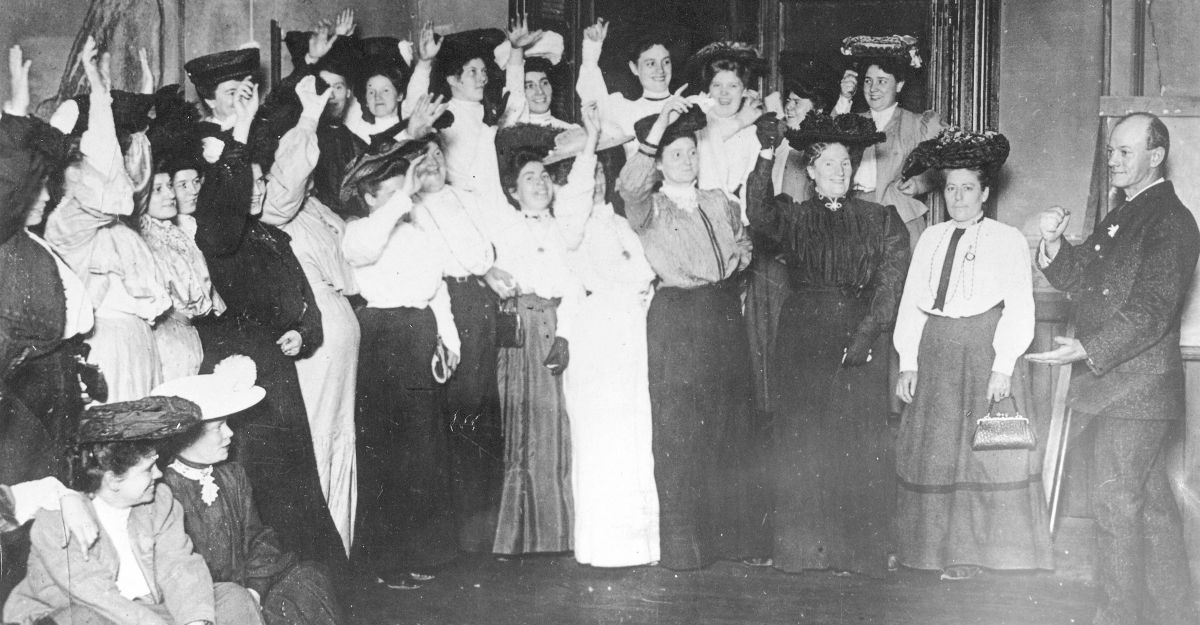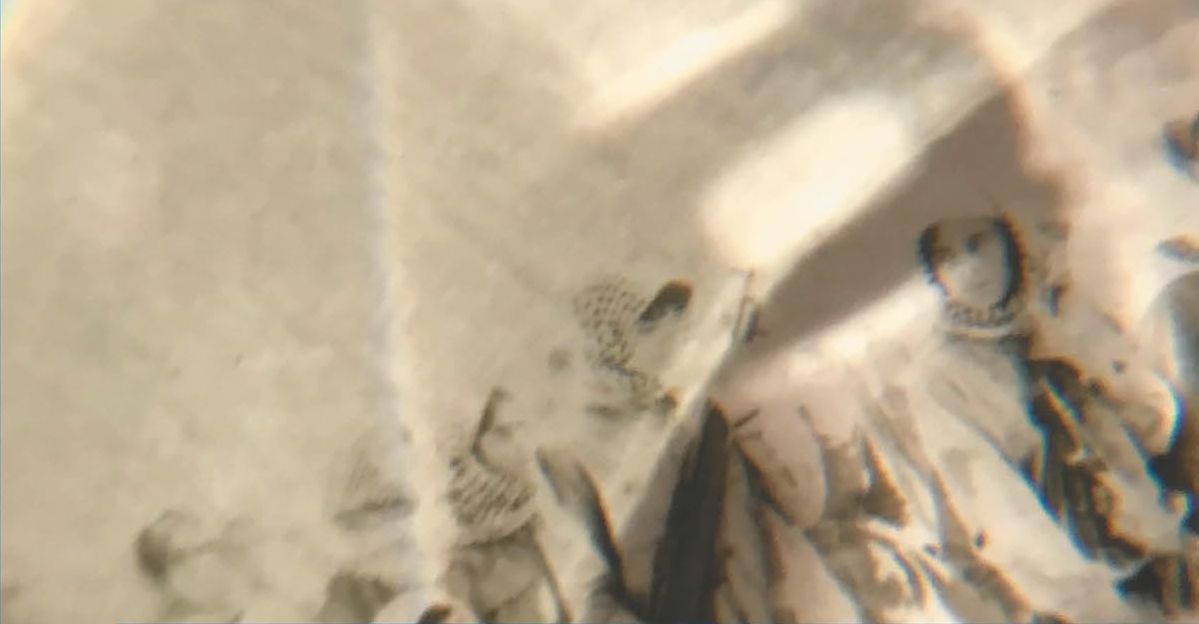With his ruby and diamond-studded Rolex, and a fleet of ninety-three Rolls-Royces, Bhagwan Shree Rajneesh (1931–1990) – or Osho, as he came to be known – was the bling guru. He rejected the asceticism of traditional Indian spiritual practice and embraced materialism and sexual disinhibition. It was a clever bit of mystical upcycling targeted at Westerners, and in the eighties – a decade where material excess could be passed off as charismatic irreverence – my hometown of Fremantle, Western Australia became a major international hub for Osho’s devotees. Recognisable by their orange clothes, his followers were called Sannyasins. A recent exhibition at Fremantle Arts Centre, Orange: Sannyas in Fremantle (1 April–21 May), explored the legacy of this controversial movement.
The extroverted Sannyasins aroused much public and media interest with their rumoured ‘free-love’ sexual practices, and concerns were inevitably raised about the welfare of Sannyasin children. In an interview, the exhibition’s co-curator Sohan Hayes acknowledged that his own experiences as a child growing up in the movement were mixed: parental responsibility was deemed secondary to the relationship with the master, and like many Sannyas children, he was left in the care of other adults for extended periods while his parents went off on their spiritual pursuits. Hayes nonetheless hoped the exhibition would ‘depoliticise’ the movement, complementing media representations with a more ‘sensory’ experience of Sannyas.
This friction of perspectives animated Loren Holmes’ mixed media work the explosive silence, in which a wealth of archival press material was printed onto a long, orange, wall-mounted box. Embedded into the box were a range of peepholes: peering in, between articles, I glimpsed photographs of ‘ecstatic’ disciples ‘taking Sannyas’ from their master. The peephole, it seemed, was meant to suggest the limitations (and prurient expectations) of an outsider view, though the fact that Sannyasin rapture was signified via a gimmicky kaleidoscopic lens did little to dispel an air of a confidence trick about the experience.
Significantly, the impetus for the exhibition was the death of Hayes’ mother, who still had a photograph of Osho on her mantlepiece when she died. If it’s typical for the bereaved to go through a phase when they idealise their loved one, protecting them from their more ambivalent feelings, much of the exhibition felt vulnerable to this aura of mourning. In Poppy van Oorde-Grainger’s music video work ‘Letting Go,’ images of dancers were superimposed on Fremantle Trades Hall, the local movement’s old headquarters. Shifting between older Sannyasins and a younger, sneaker-and-midriff generation who have inherited the practice of ‘ecstatic dancing,’ the footage suggested continuity rather than rupture.
The work Mirage, a collaboration between Dave Brophy, Bevan Honey and Dave Franzke featured a colour-separated print of a Rolls-Royce, whimsically embedded with a ‘spirit radio’ which broadcast Osho’s voice upon approach. Funded by ‘grateful’ disciples, the guru’s fleet of Rolls-Royces were an object of particular media scrutiny: some followers continue to explain this excess away as a profound and deliberate spiritual paradox, holding up a mirror to consumerism; others, like Hayes in his curator’s talk, simply treat it as an endearing quirk. Such indulgence, common among Fremantle Sannyasins, betrays a certain orientalism; as though their guru was an inscrutable subcontinental Yoda.
At the opening, one could have been forgiven for thinking they’d stumbled upon a group reunion rather than an art exhibition, a moved Hayes warmly acknowledging those wearing orange or devotional wooden malas. As I made my way around the gallery, the presumption of a sympathetic insider audience began to feel prohibitive. How, for instance, was I to justly respond to the inclusion of some of Hayes’ mother’s devotional drawings, executed in a naïve New Age style?
Osho taught that where art traditionally came out of the mind, and was therefore ‘subjective,’ the kind of art to which he moved his followers came ‘out of no-mind, out of silence, out of meditation’ and was ‘objective.’ The notion of the artist as a mere instrument that the ‘universe sings through’ conveniently places the work beyond critique, where it can be enlisted as a Sannyas product testimonial (Osho defined art as ‘the entrance to the temple of religion’). Responding in his curator’s talk to a criticism of the quality of some of the work, Hayes protested ‘how can you deny the experience?’ The notion that the fault is in the unmoved spectator, not the work, evokes a larger cult ethos, where the sceptic is seen as a victim of their doubting mind. As Osho said, ‘to anyone who cannot experience it, it will look like a con.’
Covert sceptics may have found some reprieve in Loren Holmes’ Where is Utopia? Set out on a table like an architectural plan, the work concerned Rajneeshpuram, a commune of up to 7000 disciples, established in Oregon in the eighties, which had its own airport, fire department and post-office. Illustrated in the manner of an instructional pamphlet, one detail showed a plane dropping orange cargo on a winding line of followers. A military intervention, spreading Agent Orange? Or were those prone bodies in states of meditative surrender, felled by Rajneesh propaganda? While the community avoided a fate à la Jonestown, it saw the genesis of what is considered the largest act of biological warfare on American soil. Hoping to gain power in the local election by affecting voter turn outs, in 1984 the movement succeeded in poisoning approximately 750 members of the Oregon community with salmonella, and Osho’s right-hand woman, Ma Anand Sheela, later landed a twenty-year sentence for her role. When the controversy erupted, Sheela claimed her master was complicit in these crimes; Osho responded like a lizard in peril, instinctively dropping its tail. His personal assistant, he told the media, was ‘just a hotel waitress’ whom he had made into ‘almost a queen’; ‘she did not prove to be a woman, she proved to be a perfect bitch.’
Sheela became the public face of the movement when she visited Western Australia in 1985, infamously dismissing concerns about the local expansion of the movement with her phrase ‘tough titties.’ Watching this old 60 Minutes footage on a gallery screen, it’s not hard to imagine how this irreverent, sharp-tongued woman became a scapegoat for many of the movement’s crimes. An audience member at the curator’s talk reported that other than being ‘taken away to Sydney by Sheela’s lot,’ his time in the movement was positive. It’s good PR, of course, to insist an organisation’s failings aren’t endemic but a corruption of a ‘pure’ message, and many bought the party line.
Even the domestic styling of the exhibition seemed to insist on a benign, home-grown groundswell, far from the lurid controversies of Oregon. Worn arm chairs clustered around a fireplace lit by a warm-toned video of the guru; over near the window, visitors crowded around a collection of photo frames, remembering old comrades. Escaping the pervasive air of bonhomie, I entered the room screening Joseph London’s video work Untitled, in which voices of present-day Sannyasins were played over scenes of Fremantle streetscapes. Watching the footage of freight trains trundle into the port, I ruminated on less tangible cargo: imported philosophies and the way they have woven their way deep into Fremantle’s social fabric. Though the movement went underground post-Oregon, when the guru instructed his followers to stop wearing orange, the Oshoisms have trickled down into local hippy parlance.
When I recently developed an allergic response to a rental house with a mould problem, my landlady assured me that my serious breathing problems were a sign of repressed emotion. A close friend coming out to his mother was met with a despairing ‘but your chakras!’ (Osho, charmingly, viewed homosexuality as a ‘perversion’ of ‘natural’ heterosexual energy). In press releases, Hayes claimed that Arts Centre director Jim Cathcart felt a ‘moral obligation to cover this part of Fremantle history,’ yet little of the work considered the impact the movement has had on local imaginings of ethical responsibility. Disconcertingly, this exhibition by a respectable art institution provided a forum for present-day recruitment. A handwritten note casually left behind on a memorabilia table urged the reader to Google the official Osho website; a note pinned to the message board declared that the opening night marked the beginning of a ‘journey’ for this visitor, who had made ‘many new friends.’
I had to look deep among the exultant notes of praise to find a sober message saying the exhibition had brought up the ‘sadness and anger of a lost friend.’ Letting go had its problems, the note continued, and there was little support for some. ‘Letting go’ is a reference to the form of dynamic meditation in which semi-naked Sannyasins were blindfolded and told to cathartically ‘go mad,’ relinquishing their ego (or at least their critical defences). Hayes’ own artwork, Dynamic VR, included virtual reality headsets that offered a tame simulation of this experience of altered perception. Replicating the padded walls ashrams used for this ‘active’ form of meditation, the layout played off the Art Centre’s history, from 1864 to 1909, as the Convict Establishment Fremantle Lunatic Asylum. Donning the headset and moving self-consciously around the room, I thought of another psychiatric centre in the late 1800s, Salpêtrière Hospital, where female patients were prompted by French physician Jean-Martin Charcot to perform the symptoms of hysteria for a captive audience.
Sannyasin ‘madness’ had its own unique set of dramatic conventions, including induced hyperventilation, convulsions and screams. While Hayes’ work made a coy nod toward the outsider view of Sannyasin practices as ‘nutty,’ it’s unlikely the average gallery goer would have been aware of a more explicit link: several disciples working in the Western Australian Mental Health Services in the early eighties referred patients to the organisation, potentially introducing the vulnerable to these destabilising practices. Preaching that the root of all problems was repressed sexual energy, Osho encouraged his followers to strenuously ‘liberate’ their primal instincts in a controversial form of ‘encounter therapy.’ There were reports of physical and sexual assaults.
The exhibition catalogue portrayed Osho as a man whose vision was misunderstood by the media, claiming his ‘intention was to point toward a new way of being in the world, free from ideology and morality, yet responsible and aware.’ Yet while the media’s labeling of the Sannyasin movement as a ‘sex cult’ certainly played into conservative fears, the movement’s leader was just as well versed in moral panic. Preaching that AIDS was a homosexual disease, and warning of a conspiracy of doctors distributing false negative medical certificates, Osho claimed that his ashram was the only safe haven from a coming AIDS apocalypse; though he instructed his followers to wear gloves during sex for full protection. Which explains this gem of eighties Fremantle graffiti: The price of free love? Rubber gloves.
Fond of mythologising its ‘libertarian’ spirit, my sun-boiled port town is prone to a bit of cultural amnesia. But in our rush to celebrate local ‘colour,’ reclaiming the Sannyasin movement as a bit of harmless eccentricity, let’s not forgot those who were damaged or neglected by its vast web; nor pity them as unfortunate, remote exceptions. After all, it takes a village.






